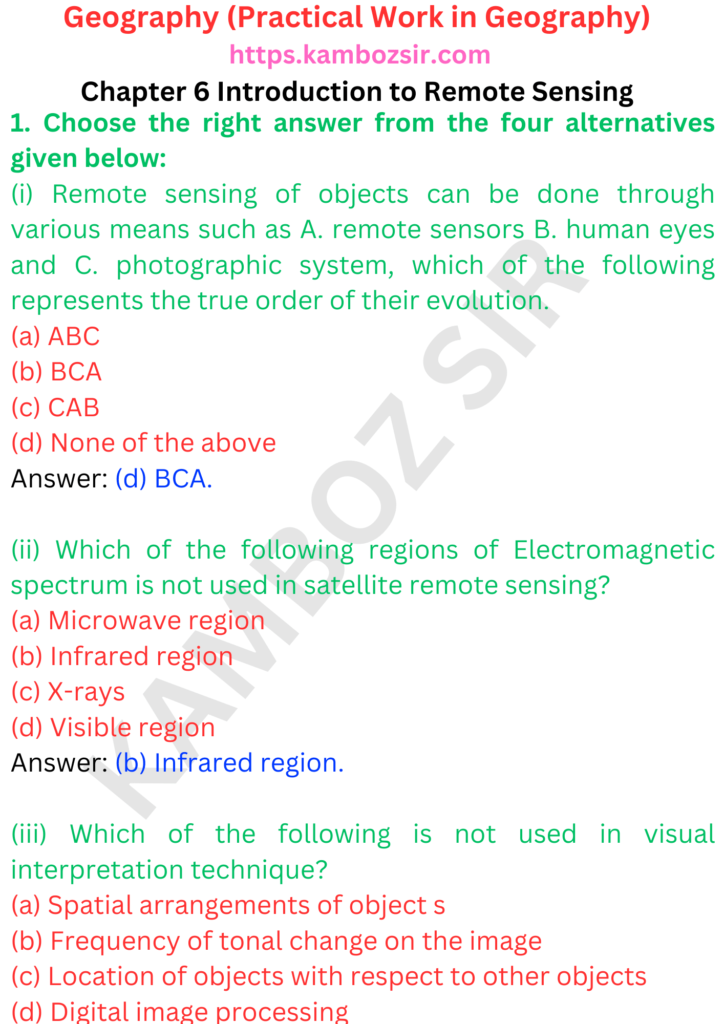Class 11 Geography Chapter 6 Introduction to Remote Sensing Solution
Class 11 Geography Chapter 6 Introduction to Remote Sensing Solution
In Chapter 6 of Class 11 Geography, we explore the fascinating field of remote sensing. Remote sensing refers to the process of acquiring information about the Earth’s surface without being in direct physical contact with it. It involves the use of various sensors and instruments to capture and analyze data from a distance.
We begin by understanding the basic principles of remote sensing. We learn about the electromagnetic spectrum and how different wavelengths of energy are used to gather information about the Earth’s surface. We explore the concept of passive remote sensing, where sensors detect and measure naturally occurring radiation, such as sunlight reflected by the Earth’s surface. We also study active remote sensing, which involves emitting energy and measuring the reflected or emitted signals.
Next, we delve into the different platforms and sensors used in remote sensing. We explore satellite-based remote sensing, which utilizes Earth-observing satellites to capture images and data from space. We also discuss aerial photography, which involves using aircraft or drones equipped with cameras to obtain detailed images of the Earth’s surface. Additionally, we examine ground-based sensors and their applications in specific scenarios.



